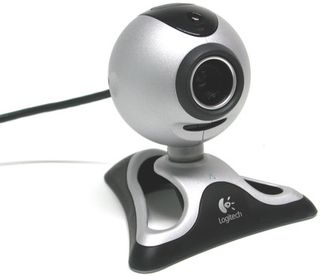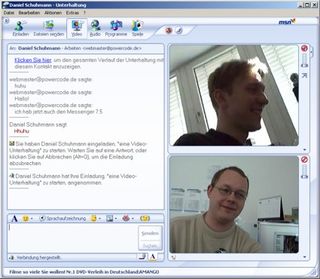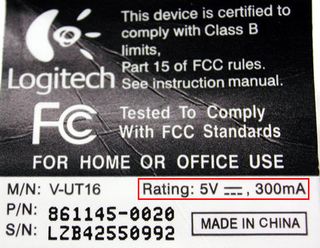Squeezing More Life Out of Your Notebook's Battery Part II
We were surprised by the many disparate sources of a notebook's battery drain. The complex interplay between software, components and peripherals during the tests we ran provided the basis for a checklist of what to do and what not to do to get the most out of any notebook's battery charge.
Webcam
In this Internet savvy era, both private and business-oriented video conferences have become commonplace. All you need is an Internet-connected mobile PC and a Webcam.

Typical Webcam: Logitech's Quick Cam 4000 Pro
To measure how much impact the use of a Webcam and videoconferencing affects battery lifetime, we employed the following set-up: First, we installed the Logitech Quick Cam 4000 Pro on our reference notebook. Next, we used MSN Messenger and a wired network connection to set up a video conference with a remote client. The remote end of our link was likewise equipped with a camera as well.

Mobile video conferencing: MSN Messenger 7.5
Because MSN Messenger limits frame transmission to conserve network bandwidth by transmitting only frames that show image changes, we had to play a little trick to make our test work properly. We aimed the camera at a TV set that was playing an endless video loop. That was the only way we could be sure that the system remained constantly active transmitting video, thus creating the kind of load we could measure.

According to the equipment label, the camera draws up to 1.5 watts
As indicated on the equipment label, our test camera consumes up to a maximum of 1.5 watts. Our own measurements showed an actual current draw of 216 mA which translates into power consumption of just over 1 watt. In standby mode, the camera consumes about 0.6 watts.
Sign up to get the BEST of Tom's Guide direct to your inbox.
Get instant access to breaking news, the hottest reviews, great deals and helpful tips.
Because the application software - perhaps better identified as the notebook's CPU - must constantly compress and decompress video data (the former to send, the latter to receive) running a videoconference imposes a significant load on the CPU. For the Pentium M 750 in our Dell Latitude, this ran as high as 40% utilization. The power consumption of the entire notebook averaged about 33 watts. Compared to our normal office usage scenario, that's an increase of more than 70%.

Incidentally, if the Internet link used for the video conference uses an internal WLAN module instead of a wired connection, the battery lifetime declines by an additional two minutes.
Current page: Webcam
Prev Page Audio Playback, Continued Next Page USB Devices: Power Consumption Levels Depend Mostly On The Application Is Use